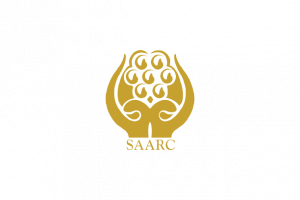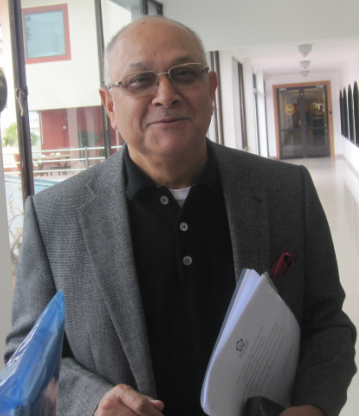(From the archives)
Prof Sridhar Khatri, Ambassador designate USA
History was made a decade and half ago when the South Asian countries committed themselves to the concept of regional cooperation.
Although skeptics have consistently questioned its efficacy in what is generally considered to be a conflict prone region, others have generally remained enthusiastic, eagerly awaiting for some concrete results from the regional endeavor.
There is, however, common grounds between both the supporters and critics of regionalism.
Both groups see the need of the “political will” as essential for the efficacy of the organization; and, there is also a consensus that the benefits must be visible in the form of greater political tolerance and positive economic benefits for the peoples of the region.
This paper touches on three themes which are linked to the future prospects of regionalism in South Asia.
First, the reasons why the “political will” has not been easily forthcoming in South Asia; second, its consequences; third, the initiatives that needs to be taken to regain the momentum for the progress of regionalism; and, fourth, the crucial decisions taken by the recent Male Summit, which can be considered a watershed in the development of the organization.
There are a number of reasons why the “political will” that is badly needed to strengthen the process of regionalism has been lacking in South Asia. The first is the bilateral political problems between India and her neighbors.
Although this is no doubt the principle cause for the lack of trust between South Asian countries, its importance needs to be scrutinized more carefully since the move towards cooperation was also taken by the regional countries despite the bilateral differences.
What is then lacking today may not be the “political will” in the broad sense of the term, but the lack of commitment to boldly follow-through on the goals of regional cooperation as the original leaders had done in accepting the basic principles during the early 1980s.
As a result, SAARC has for the last decade and a half mostly remained stagnant by chewing through the same ideas which was originally presented in the Bangladesh’ Working Paper prepared in 1980, that led to the creation of the present organizational framework under which it operates.

Bilateral and contentious issues remain excluded, and until recently regional economic issues remained neglected even though the meetings of South Asian “regional planners” and finance ministers had been held.
Even the much vaunted SAPTA is unlikely to produce tangible results as the step-by step negotiation required for tariff reduction is likely to turn into more of a perfunctory exercise, than a meaningful one.
This has been ASEAN experience with ‘the Preferential Trading Arrangement (PTA), which South Asia also seems, bound to emulate.
Second, is the absence of long-term vision? Since the beginning of SAARC member countries have not been able to impart a vision for the region in terms of what it should aim for and how it should go about realizing its goals for the future.
From the beginning sectoral cooperation was itself seen to be the amorphous goal with the Integrated Programme of Action (IPA).
Lately, this has been supplemented by the preferential trading arrangement of SAPTA, but even before it has taken- off a new target of South Asian Free Trade Area (SAFTA) has been set.
In the absence of decisive formulation of what SAARC is to be, the more insecure of the member states have been more willing to prevent it from becoming a vibrant organization and thereby preventing others from obtaining the likely gains from cooperation.
It is likely that, by setting SAFTA as a goal, member states may be forced more to think of the cost-benefit of cooperation in more concrete terms than they have in the past.
It is also possible that the blinders of the political will may come down as the rewards of cooperation are seen to be more beneficial than the cautious inaction of the past.
The third factor which slowed down the pace of SAARC is the preoccupation of member states with their own domestic problems, thus detracting their attention further away from regional cooperation.
India has been absorbed by problems in Punjab, Kashmir and the North East, not to mention the fluid political situation with the uncertain position of the pre-eminent Congress (I) in the country.
Pakistan has been going through with its political succession problem not only between the military and political parties, but also between democratically elected governments which has put its constitution to the test.
Sri Lanka has been absorbed by a civil war for over two decades, with still no end in sight.
Bangladesh and Nepal have been going through transition in political system and both are currently experiencing the fallout of brinkmanship politics, with Nepal faring somewhat better than its neighbor.
Even Bhutan is reeling from the pressures of the global wave of democratization, a consequence of which has led to deterioration of it relations with Nepal due to the influx of over 100,000 Bhutanese refugees in Nepal.
And, lastly the excessive reliance on bureaucracy to promote regional cooperation has also invariably slowed down the process.
Although the South Asian political leaders played a catalytic role in bringing about regionalism in South Asia, the responsibility for promoting the process has from the very beginning rested on the bureaucracy, in particular the foreign ministries of the respective countries.
Since the demand for innovative policies from the bureaucracy is a contradiction in terms (due to its status quo orientation), the requisite political will has been hard to come by with the bureaucracy taking the easy way out and the political leaders not willing to stick their neck out for regional cooperation.
As a result, SAARC has emerged as a poor copy of the ASEAN model with the bureaucracies displaying no eagerness to look at the experience of other models, such as those of LAFTA, CARICOM, CACM, Andean Pact, East African Community, etc.
SAARC, today, therefore functions under the institutional/operational framework of ASEAN without giving due emphasis to the accommodate aspect of cooperation as emphasized by its sister organization.
For example, whereas ASEAN leaders slowly functioned through informal shirt-sleeve working style with emphasis on generating consensus and accommodation, SAARC leaders continue to remain more formalistic, rhetorically agreeing during summits on the need to strengthen the organization but it practice procrastinating on almost every key issues needed to move the organization forward.
Moreover, as ASEAN looks forward towards the next century by visualizing its role in APEC and drawing up contacts with the Western developed world beginning with its recent meeting in Bangkok, SAARC is still not considered a serious negotiating partners by either the EU or ASEAN.
In sum, all these developments suggest that the gestation period for SAARC has been very long while it has not yet been able to produce anything concrete which the people of this region can identify as benefits of regional cooperation.
As the annual summits have already been postponed three times with the last decade and some member countries are considering the prospect of holding summit every two years, there is the danger than the original euphoria of South Asian regionalism is being challenged by the hard political realities.
Broadly speaking, one can identify three particular impacts of these developments.
First, some of the regional countries have developed a growing tendency to look elsewhere to achieve the benefits of cooperation, as Sri Lanka had done during the early years of SAARC.
As Pakistan looks more closely at Central Asia and its affinity to the large Muslim population of the erstwhile Soviet Union, Pakistan has shown greater Interest in Economic Cooperation Organization (ECO).
Similarly, India is also exploring the prospect of being ASEAN’s dialogue partner and studying the APEC prospect as its economy grown more rapidly.
Second, despite fifteen years of regional cooperation in South Asia, there have been no substantial political breakthrough in the region.
The end of the Cold War among the global powers has not been accompanied by the end of the regional Cold War between India and Pakistan.
Instead with the last decade regional security experts contend that India and Pakistan have been at the verge of war, and even nuclear confrontation, at least several times.
Moreover, while the world is going through various stages of disarmament as part of a peace-dividend of the post-Cold War period, South Asia faces the dangers of nuclear proliferation, with the possibility of arms race between India and Pakistan escalating further with the acquisition of ballistic missile technology by these countries.
The intractable problems posed by Kashmir and the externally supported insurgency in both Kashmir and Karachi proposes to further detract these countries away from the path of regional cooperation.
Although in Nepal, there is currently high expectation of India’s changing attitude towards its neighbor after the conclusion of the Mahakali Integrated Development agreement between the two countries, skeptics remain unconvinced that such an understanding will herald the dawn of new era in Nepal-India relations, as they argue that the understanding needs to be judged more on the actual implementation of the agreement than on the acceptance of broad principles.
To say all this is not to ignore some the understanding that was made possible by the meeting of SAARC leaders behind scene during the summits.
The Dhaka (1985) and the Bangalore 1986 summits led India and Bangladesh to sort out such issues as the Chakma insurgency and Teen Bigha dispute, while the meetings of the Indian and Pakistani leaders in Banglore and Kathmandu (1987) led to the signing of three major bilateral agreements on cultural cooperation, avoidance of double taxation in civil aviation, and agreement to the prohibition of attacks one other’s nuclear installations and facilities.
What is, however, significant is that these achievements have stood out as one-time effort, without successive efforts to maintain the momentum.
# Text from Prithvi Narayan campus, Pokhra, journal pf Political Science, 1998.
Thanks professor Khatri: Ed.
#Republished on November 29, 2021-For the larger interest of the readers both within and without: Upadhyaya.
Our contact email address:
editor.telegraphnepal.gmail.com
editor@telegraphnepal.com

